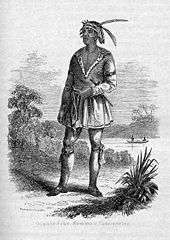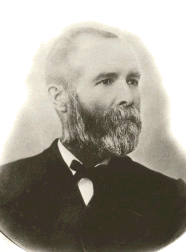American immigration to Mexico
American Mexicans (Spanish: estadounidense-mexicanos) are Mexican citizens who are either born in, or descended from migrants from the United States and its territories. This can include people of non-Hispanic European, African American, Native American, Asian American, Pacific Islander or Hispanic (of any race) backgrounds.
| Total population | |
|---|---|
| 1,500,000 United States-born residents of Mexico (2017)[1] 1,359 Puerto Rico-born residents of Mexico (2017)[1] Unknown number of Mexicans of American descent | |
| Regions with significant populations | |
| Mexico City, Jalisco, Baja California, Nuevo León, Guanajuato, Chihuahua, Baja California Sur, Sonora, Coahuila, Tamaulipas, Sinaloa, Zacatecas, Michoacán, State of Mexico, San Luis Potosí. | |
| Languages | |
| Mexican Spanish • American English | |
| Religion | |
| Roman Catholicism • Protestantism • Mormonism | |
| Related ethnic groups | |
| Americans and American diaspora |
Americans are a significant demographic group in Mexico. Over 75% of immigrants to Mexico are estimated to come from the United States, and Mexico hosts the largest number of US emigrants. Many members of the American Mexican community have dual nationality, and among them are entrepreneurs, businessmen, sports professionals, entertainers, artists, religious ministers, academics, and students, so on.
In the state of Jalisco is where the largest community of Americans lives, hovering around 30,000 citizens and is considered the largest community of Americans outside their country, they live mainly in Chapala, Ajijic, Barra de Navidad, Zapopan, Guadalajara, Tequila and Puerto Vallarta.
History
American settlers
The first settlers in Mexico from the United States were traders, including settlements in the northern territories of Alta California, Santa Fe de Nuevo México and Mexican Texas. The first empresarial grant in Texas had been made under Spanish control to Stephen F. Austin, whose settlers, known as the Old Three Hundred, settled along the Brazos River in 1822. The grant was later ratified by the Mexican government. Twenty-three other empresarios brought settlers to the state, the majority from the United States. In 1824, Mexico enacted the General Colonization Law, which enabled all heads of household, regardless of race or immigrant status, to claim land in Mexico. Due to a large number of unassimilated American settlers and imported slaves, President Anastasio Bustamante outlawed further immigration of United States citizens to Texas through the Law of April 6, 1830, nonetheless immigration continued illegally.
Mexico once recognized citizens born in the territory lost in the Treaty of Guadalupe Hidalgo to protect their property, farms, and ranches. However, they had to adopt a new nationality and very few descendants had ever decided to regain their Mexican nationality.
American exiles

Facing the threat of enslavement, in 1850 the Black Seminole leader John Horse and about 180 Black Seminoles staged a mass escape to northern Mexico, where slavery had been abolished more than twenty years earlier. There is a band of the Kickapoo tribe present in northern Mexico as result of 19th-century migration. There is also a Cherokee Nation of Mexico that claims to be the descendants of 19th-century Cherokee migrants. However, they are not officially recognized by the Federal government.
A few of the routes of the Underground Railroad led to Mexico.[2] An estimated 5,000 to 10,000 slaves escaped to Mexico.[3]
In 1865 a substantial number of former Confederates fled to Mexico from the defeated Confederate States of America.[4][5][6] They set up the New Virginia Colony. However, many of the ex-Confederates left the country once Emperor Maximilian I was overthrown.
One known Mexican of U.S. ancestry is former president Vicente Fox, whose great-grandfather, reportedly of German American ancestry, left Cincinnati for Mexico in the 1860s after the U.S. Civil War.
Businessmen
During the Porfiriato, foreign businessmen were welcomed into the country in order to help with Mexico's modernization through enterprises such as railroad construction and mineral exploitation. American capitalists included the likes of Edward L. Doheny and William Cornell Greene. Also notable among these early entrepreneurs were the Californian immigrants Walter and Frank Sanborn, who opened Mexico's first soda fountain. Their business would go on to become the Grupo Sanborns. Founded in 1888, the American School Foundation in Mexico City was created to cater to American immigrants.
Artists and leftists
For decades, Mexico has also drawn numerous artists, including Pablo O'Higgins, William Spratling and Waldeen Falkenstein.
During the Cold War, Mexico was a country of refuge for political leftists, and received various American exiles, especially from the film industry. Notable among these individuals was Elizabeth Catlett, prominent African-American artist who was declared an "undesirable alien" by the U.S. government as a result of suspected Communist affiliations.
Recent immigrants
Recent migrants can be categorized into three broad categories: retired expatriates (which tend to congregate in American colonies like Ajijic or San Miguel de Allende), professionals working in Mexico (tending to reside in large cities like Monterrey or Mexico City) and the American children of Mexican nationals (which can be found throughout the country). Most commonly, these American-born minors follow their parents once they are deported to Mexico. Nonetheless, it is also common for adult children to return to their parents home country of their own will.
From 2014 to 2016, 23,613 Americans received permanent residency, with a total of 72,140 Americans receiving temporary or permanent residency permits.[7] About 600,000 US-born children live in Mexico.[8] According to 2015 data from the National Institute of Statistics and Geography (INEGI), more than 280,000 children born in the US and now living in Mexico, do not have sufficient documentation to prove their Mexican identity.[9]
Culture

American Mexicans retain customs such as Thanksgiving Day and the Independence Day of the United States celebrated on July 4.[10]
American football arrived to Mexico in 1927, by direct influence of the United States.[11] It started to be played in Mexico City among young students from universities, and sport clubs showing a great interest for this foreign sport of considerable popularity among American students. Throughout the years, the sport became popular at an amateur level among universities of Mexico.[11] The sport has remained popular as a result of easier access to televised MLB and NFL games and the desire of American Mexicans to partake in American pastimes.
Recent migrants, especially those in the retired community, remain closely attached to and promote the values of the U.S. through organizations such as Democrats and Republicans Abroad, the American Legion, and the Sons and Daughters of the American Revolution.[12] Also common among this group is the lobbying of local governments on a range of issues such as development, security, sanitation and historical preservation.[12] This may be problematic if they are not naturalized citizens, since the Mexican Constitution prohibits the involvement of foreigners in the country's politics.[12]
Language
Most Mexicans of American descent speak American English and Mexican Spanish, either of which can be that person's first language. However, not all in the community are proficient in both languages. Among migrants it is not uncommon to find people lacking proficiency in Spanish even after years of living in the country.[12] This can be attributed to the relative isolation of American enclaves and the willingness of Mexicans whom they interact with to adjust to English requirements.[12]
Religion
Most Mexicans of American descent are Christians, either Catholic, Protestant or Mormon (including both Latter-day Saints and various breakaway sects).

According to the 2010 census, 314,932 individuals reported belonging to the Latter-day Saints Church.[13] However the majority of Latter-day Saints in Mexico are ethnic Mexicans. Many Mexican Mormons of American descent reside in the Mormon colonies in Mexico, where some American Mormons settled in the late 19th century. Some of these American Mexicans or their descendants have returned to the United States since, including church leader Marion G. Romney, politician George W. Romney, and chemist Henry Eyring. More recent prominent Mexican Mormons of American descent include Carl B. Pratt, the current president of the LDS Church's Missionary Training Center in Mexico City and a former General Authority of the church.[14] The current president of the LDS Church's Mexico Area, Daniel L. Johnson is also a Mexican of American descent, although his two counselors are both ethnic Mexicans.[15]
There has been a small migration of American Jews into Mexico.[16] A minority may have Mexican Jewish ancestry descended from the Crypto-Jewish population of what is now the Southwest U.S.
Education
There are the following American international schools in Mexico:
Mexico City:
Other cities:
American Mexicans
Notable American Mexicans
- Elizabeth Catlett, artist
- Angélica María, singer and actress
- Mauricio Ochmann, actor
- Chabelo, TV host
- Ana Brenda Contreras, actress
- Alondra de la Parra, actress
- Tony Dalton, actor
Notable Mexicans with origins of the United States
- Alberto Braniff, aviator
- Santiago Creel, politician
- Manuel Bartlett, politician
- Lila Downs, singer
- Aarón Díaz, actor
- Lupita Jones, beauty pageant titleholder
- Jesse Huerta, singer
- Joy Huerta, singer
American Communities
The largest number of Americans outside the United States live in Mexico. According to Mexico 2010 Census, there are 738,103 Americans living in the Mexican Republic, while the US Embassy in Mexico City has at times given an estimate closer to 1 million (the disparity is due to non-permanent residents, notably the "snowbirds"). Mostly, people who come from the USA are students, retirees, religious workers (missionaries, pastors, etc.), Mexican-Americans, and spouses of Mexican citizens. A few are professors who come employed by Mexican companies to teach English, other English teachers, and corporate employees and executives.
While significant numbers live in Mexico year round, it is probable that a majority of these residents do not stay the whole year. Retirees may live half a year in the U.S. to keep retiree benefits. Those called "snowbirds" come in fall and leave in spring. The American community in Mexico is found throughout the country, but there are significant concentrations of U.S. citizens in all the north of Mexico, especially in Tijuana, Mexicali, Los Cabos, San Carlos, Mazatlán, Saltillo, Monterrey, Ciudad Juárez, Matamoros, Reynosa, Ensenada and Nuevo Laredo. Also in the central parts of the country such as San Miguel de Allende, Ajijic, Chapala, Mexico City, Guadalajara and Cuernavaca, and along the Pacific coast, most especially in the greater Puerto Vallarta area. In the past few years, a growing American community has developed in Mérida, Yucatán.
Alaska has a presence as students and entrepreneurs. Without forgetting the annual presence that they have in tourism, when in seasons of the year, Alaska is hit by cold fronts and icy seasons, for this reason thousands of Alaskans take refuge in Mexican territory from 1 to 3 months of stay only, some as tourists and others as residents.
The Arizonians have approximately 20,500 members based in Sonora, Baja California, Chihuahua, Mexico City, Jalisco, Coahuila, Baja California Sur, Sinaloa, Nuevo León, Zacatecas, Coahuila, Guanajuato, Michoacán, State of Mexico, among others. This community arrived in Mexico in the middle of the 20th century and today they are the largest community of Americans living in Mexican territory without taking into account the link that has existed since colonial periods.
Californians have approximately 110,500 members based in Baja California, Baja California Sur, Sonora, Mexico City, Jalisco, Tamaulipas, Chihuahua, State of Mexico, Nuevo León, Zacatecas, Coahuila, Guanajuato, Michoacán, among others. This community arrived in Mexico in the mid-20th century and today they are the largest community of Americans living in Mexican territory without taking into account the link that has existed since colonial periods.
The New Mexicans have approximately 50,000 members based in Chihuahua, Sonora, Coahuila, San Luis Potosí, Zacatecas, Jalisco, Guanajuato, Michoacán, Nuevo León, Tamaulipas, State of Mexico, Mexico City, among others. This community arrived in Mexico at the beginning of the 20th century and today they are one of the most outstanding communities of Americans living in Mexican territory without taking into account the link that has existed since historical periods.
There is a New Yorker presence as students and entrepreneurs. Without forgetting the annual presence that they have in tourism, when in seasons of the year, New York is hit by cold fronts and icy seasons, therefore thousands of New Yorkers take refuge in Mexican territory from 1 to 3 months of stay only, as tourists and residents.
Texans have approximately 88,000 members in Chihuahua, Tamaulipas, Nuevo León, Mexico City, Jalisco, State of Mexico, San Luis Potosí, Zacatecas, Coahuila, Guanajuato, Michoacán, among others. This community came to Mexico at the beginning of the 20th century and today it is one of the largest communities of Americans living in Mexican territory without taking into account the link that has existed since historical periods.
See also
References
- "Table 1: Total migrant stock at mid-year by origin and by major area, region, country or area of destination, 2017". United Nations, Department of Economic and Social Affairs, Population Division. Retrieved 17 August 2018.
- "Aboard the Underground Railroad". National Park Service. Retrieved 2 April 2015.
- "The Little-Known Underground Railroad That Ran South to Mexico". History. Retrieved 1 November 2018.
Researchers estimate 5,000 to 10,000 people escaped from bondage into Mexico, says Maria Hammack, who is writing her dissertation about this topic at the University of Texas at Austin.
- Todd W. Wahlstrom, The Southern Exodus to Mexico: Migration Across the Borderlands After the American Civil War (U of Nebraska Press, 2015).
- Rachel St. John, "The Unpredictable America of William Gwin: Expansion, Secession, and the Unstable Borders of Nineteenth-Century North America." The Journal of the Civil War Era 6.1 (2016): 56-84. online
- George D. Harmon, "Confederate Migration to Mexico." The Hispanic American Historical Review 17#4 (1937): 458-487. in JSTOR
- "Estadounidenses viven el "sueño mexicano"". El Universal (in Spanish). 27 February 2017. Retrieved 26 April 2018.
- "Niños migrantes son prioridad para Consulado | Embajada y consulados de Estados Unidos en México". Embajada y consulados de Estados Unidos en México (in Spanish). 12 August 2015. Retrieved 26 April 2018.
- "For American children of Mexican immigrants, a battle to get documented in Mexico". Retrieved 26 April 2018.
- Retiring Americans, Go south, old man by The Economist
- GABRIELA DEYANIRA MARTINEZ GARCIA (2007). "AMERICAN FOOTBALL IN MEXICO: FACTORS INFLUENCING SUCCESS OF TEAMS WITHIN THE NATIONAL COLLEGE FOOTBALL ORGANIZATION, ORGANIZACION NACIONAL ESTUDIANTIL DE FUTBOL AMERICANO (ONEFA)" (PDF). tamu.edu. Retrieved 10 December 2014.
- Sheila Croucher (2010). The Other Side of the Fence: American Migrants in Mexico. University of Texas Press. pp. 2, 3. ISBN 9780292782389.
- "Panorama de las religiones en México 2010" (PDF) (in Spanish). INEGI. p. 3. Archived from the original (PDF) on 21 October 2015. Retrieved 2 April 2015.
- "Newsroom: News Story – Mexico MTC Opens to Train Hundreds of Missionaries", MormonNewsroom.org, LDS Church, June 26, 2013
- Church News, May 15, 2013
- Elazar, Daniel J. "Mexican Jewry: Some Persistent Issues". World Zionist Organization. Retrieved 4 January 2016.
Further reading
- Hart, John Mason. Empire and Revolution: The Americans in Mexico since the Civil War. Berkeley: University of California Press 2002.
- Rolle, Andrew F. The Lost Cause: The Confederate Exodus to Mexico. Norman: University of Oklahoma Press 1965.
- Schreiber, Rebecca Mina. Cold war exiles in Mexico: US dissidents and the culture of critical resistance. U of Minnesota Press, 2008.
- Wahlstrom, Todd W. The Southern Exodus to Mexico: Migration Across the Borderlands After the American Civil War. Lincoln: University of Nebraska Press, 2015.
External links
- Los que llegaron - Estadounidenses from Canal Once (In Spanish)
.jpg)


